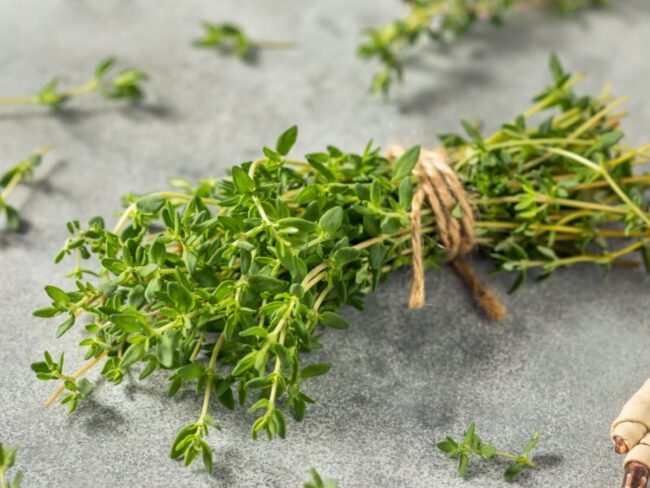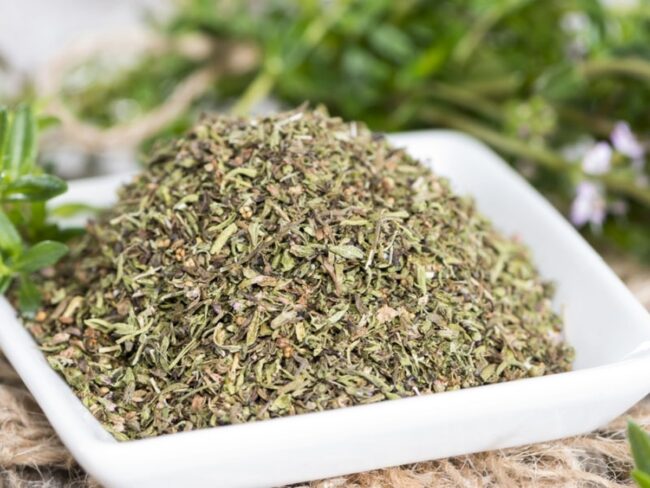Flavorful Swaps for Rosemary in All Your Recipes
Rosemary replacements provide the same aromatic depth when fresh sprigs aren’t available.
Other herbs with earthy or slightly woody notes make excellent alternatives.
People love how certain blends can match rosemary’s distinct essence.
Different choices bring subtle variations in taste.
Understanding Rosemary
This aromatic herb, known scientifically as Salvia rosmarinus, is part of the Lamiaceae family that includes other well-known herbs like sage and mint.
Recognizable by its bushy form and needle-like leaves, rosemary has a strong scent that adds flavor to many dishes.
Its benefits extend beyond cooking; studies suggest it may help boost memory and cognitive function.
Sometimes a recipe might call for a different herb or you may want to try new flavors instead.
Sage serves as an alternative with an earthy taste but offers less piney notes than rosemary, while mint brings in a fresh twist with its menthol flavor.
Understanding these differences helps in choosing the right substitute to elevate your meals confidently.
Why Use a Substitute?
Cooking sometimes presents unexpected challenges, like running out of rosemary.
This versatile herb adds a distinct flavor that enhances many dishes, but alternatives can easily replace it.
Thyme, sage, and tarragon serve as excellent substitutes with similar tastes and work well in both dried and fresh forms.
Knowing these options empowers cooks to adapt recipes without compromising on flavor.
With this knowledge at hand, culinary creativity flourishes as new herbs are explored in different meals.
Confidence grows in the kitchen when you have reliable substitutes for essential ingredients like rosemary ready to use anytime.
Comparing Fresh and Dried Rosemary
Choosing between fresh and dried rosemary can elevate your cooking experience.
Fresh rosemary brings a strong flavor and delightful aroma, perfect for dishes like roasts, soups, and stews.
The vibrant green leaves add an intense taste but spoil quickly; storing them in a damp paper towel inside the refrigerator helps maintain their freshness.
Dried rosemary serves as a long-lasting option with a milder flavor profile, making it suitable for slow-cooked meals or recipes needing less intensity.
This form can be kept easily at room temperature in an airtight container for convenience.
Remember that dried rosemary is stronger than fresh; typically one teaspoon of dried replaces one tablespoon of fresh to achieve the right taste balance.
Experimenting with both types allows you to discover which best complements your culinary creations.
Substitutes for Fresh Rosemary
Fresh rosemary can sometimes be hard to find, but many alternatives offer similar flavors.
Thyme serves as a fantastic replacement because of its minty and slightly bitter notes.
For dishes needing a stronger flavor, sage works well with meats and vegetables, though it should be used in moderation due to its intensity.
Marjoram presents a milder option that fits lighter recipes; use one and a half times the amount compared to fresh rosemary for the best results.
Caraway seeds provide an interesting taste too but require careful measurement since they are more potent. About half the quantity is sufficient.
Dried rosemary also makes for an excellent substitute; just remember that one-third of what you would normally use is enough due to its concentrated flavor profile.
Substitutes for Dried Rosemary
Running out of dried rosemary can be frustrating, but several other herbs can easily replace it.
Oregano stands out with its bold flavor, making it an excellent choice for roasted meats and vegetables.
A one-to-one swap keeps the taste intact.
Dried savory also works well; its peppery notes enhance various dishes like soups and stews in equal measure as a substitute.
Herbs de Provence brings a Mediterranean twist to your cooking.
This blend includes thyme, oregano, basil, and more. Just use the same amount as you would rosemary to maintain balance in your dish.
Bay leaves provide a milder alternative; their unique flavor shines through when using two leaves for every teaspoon of dried rosemary needed.


